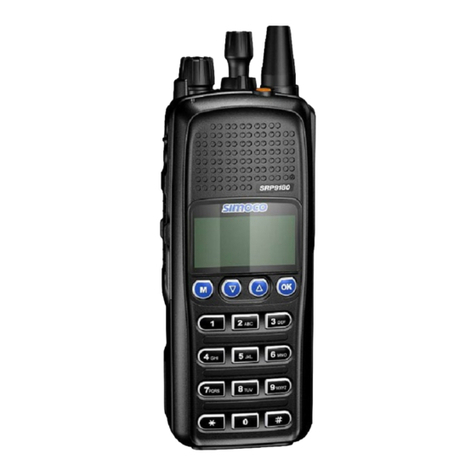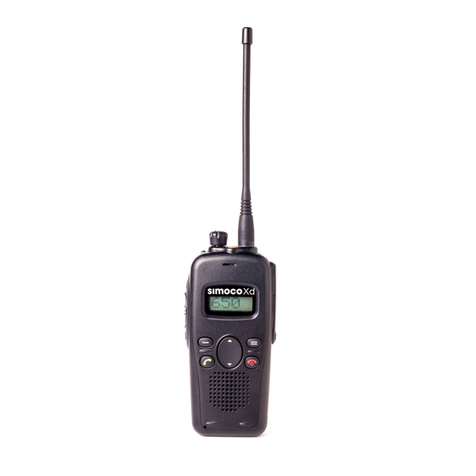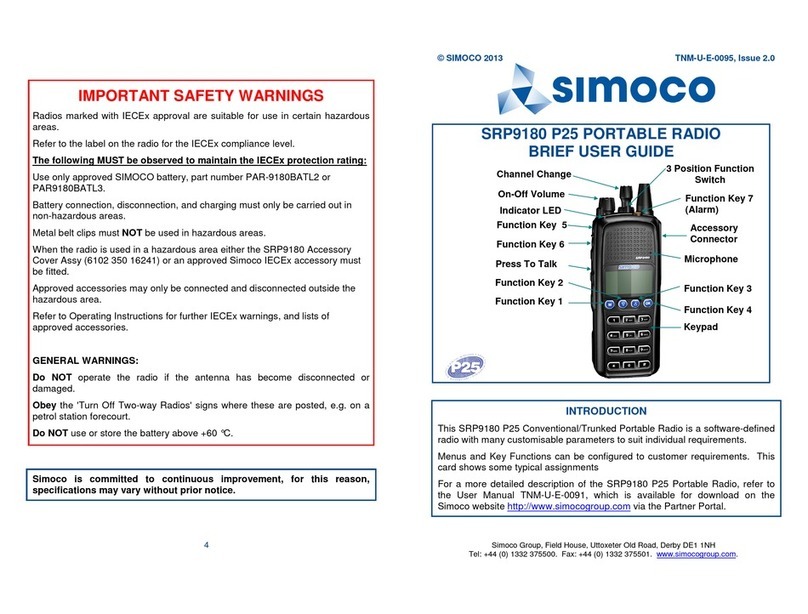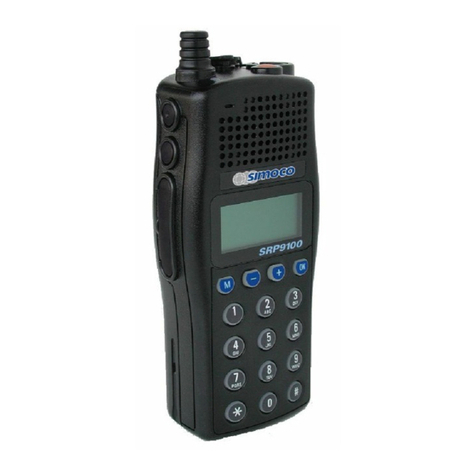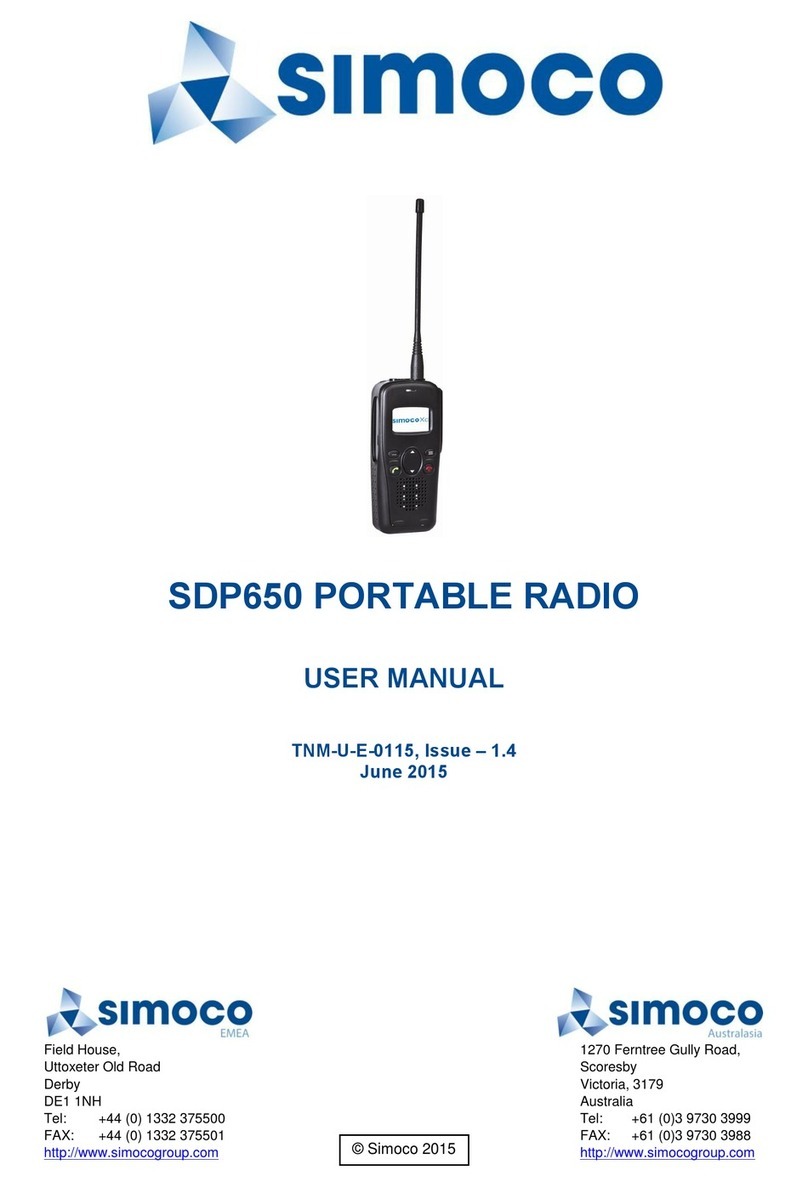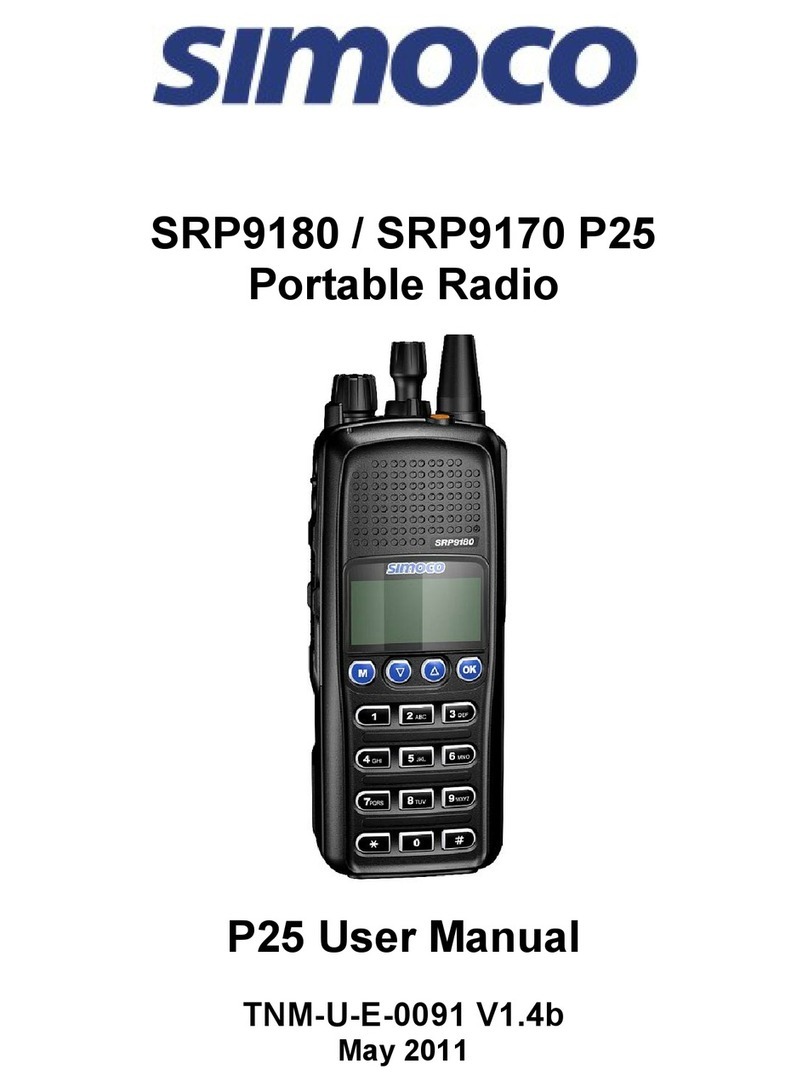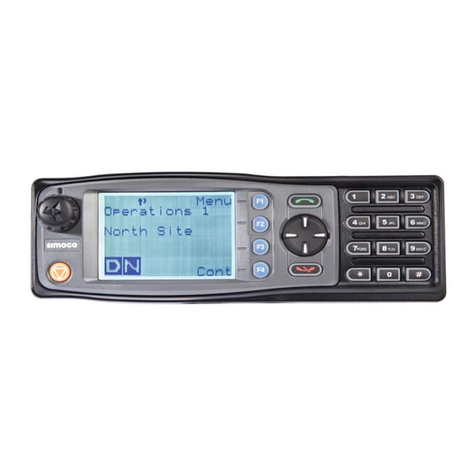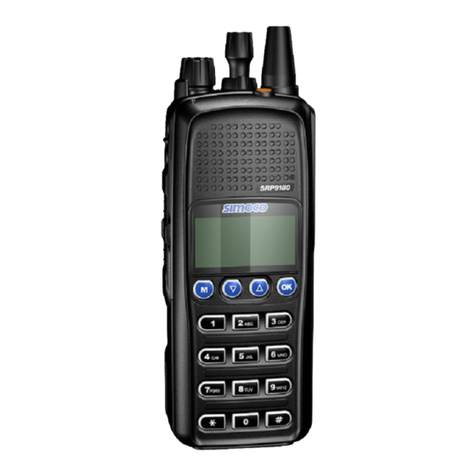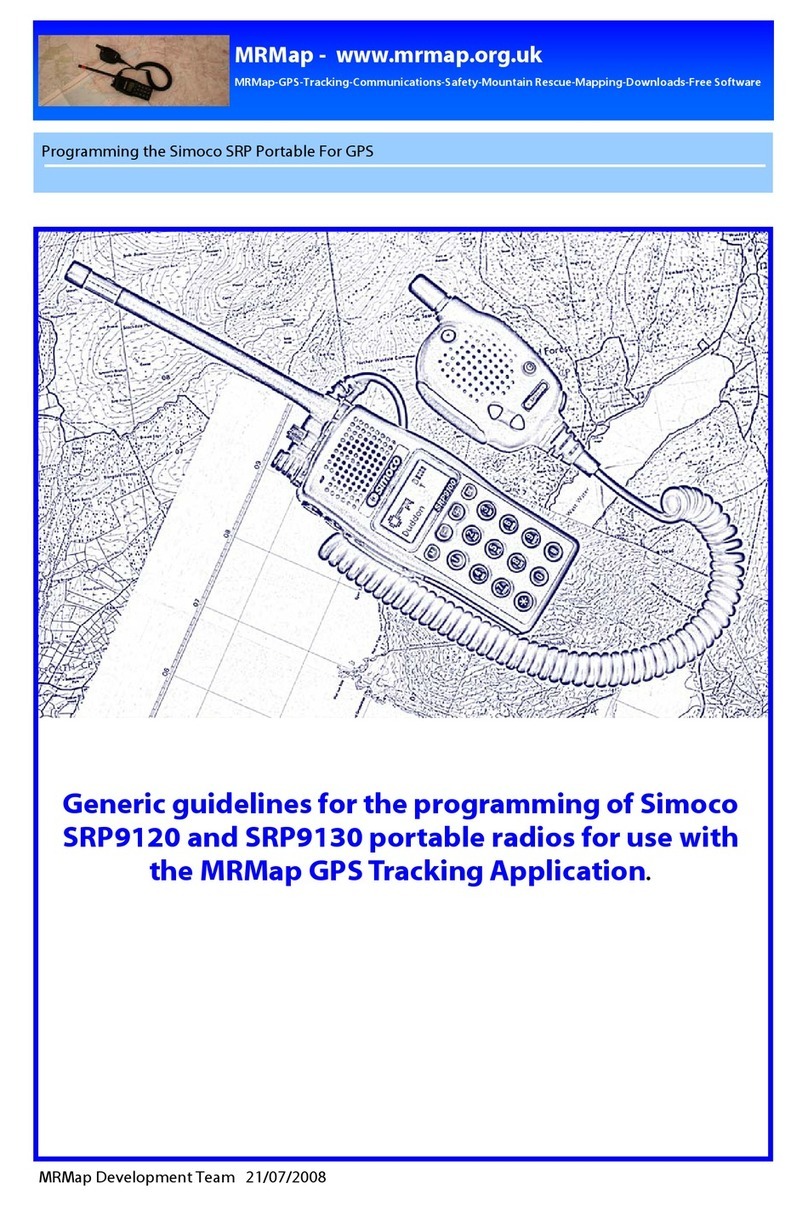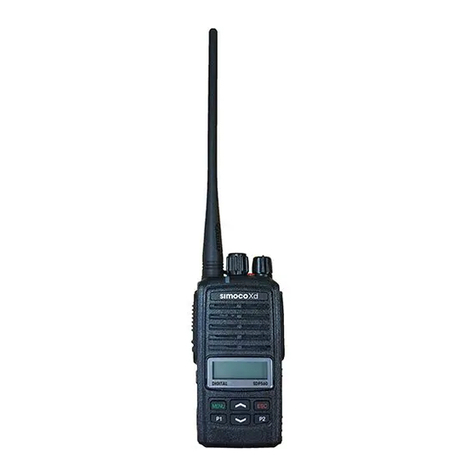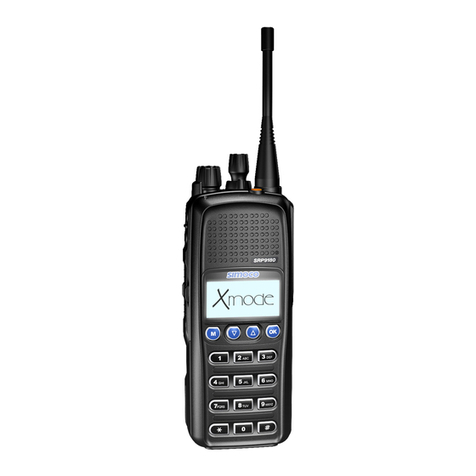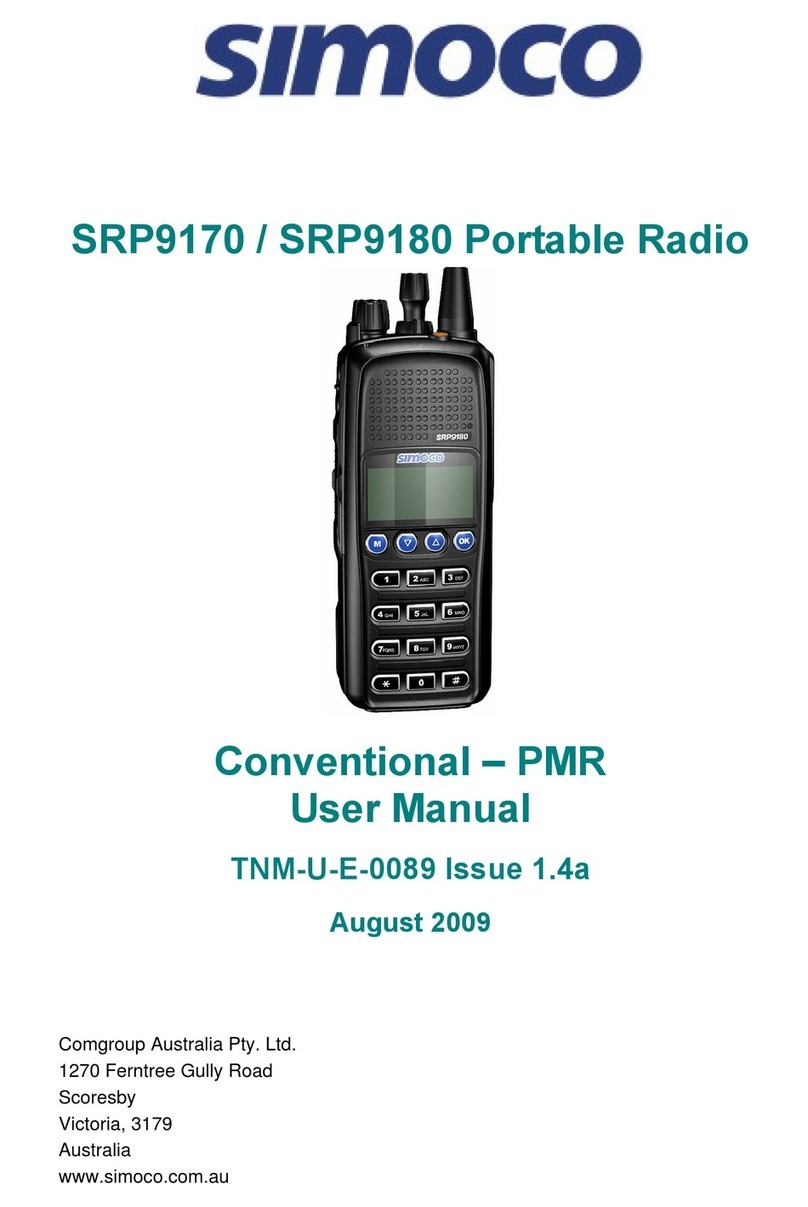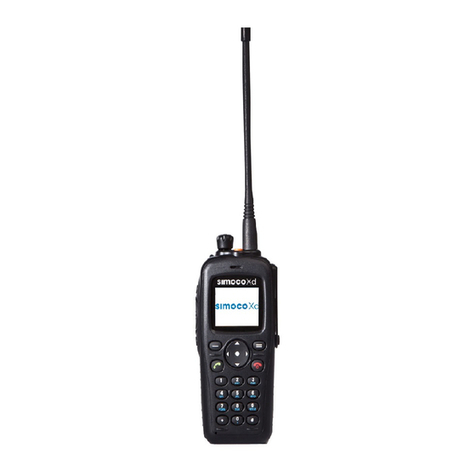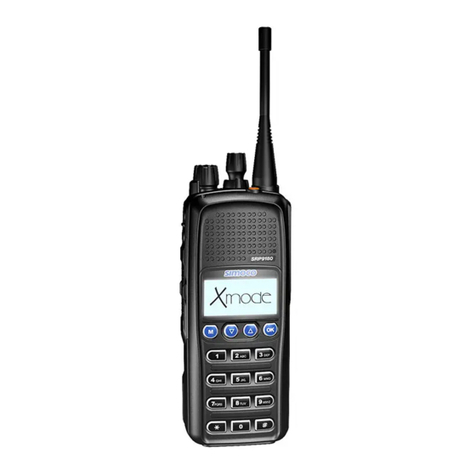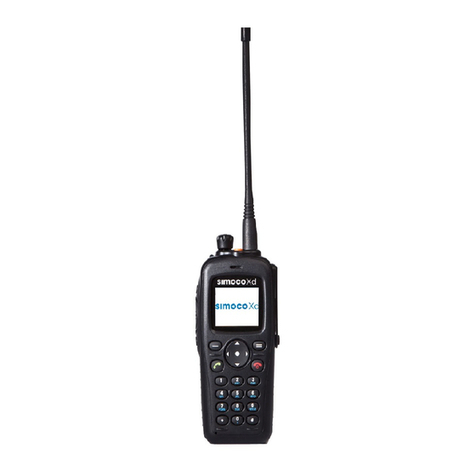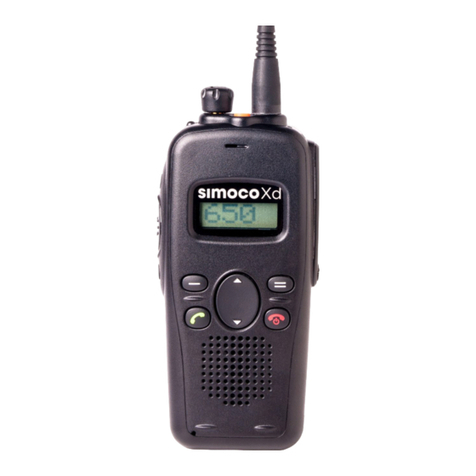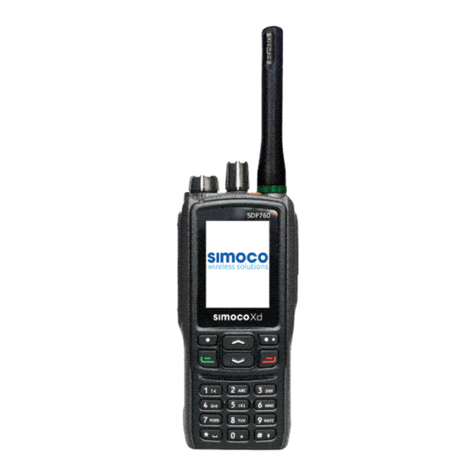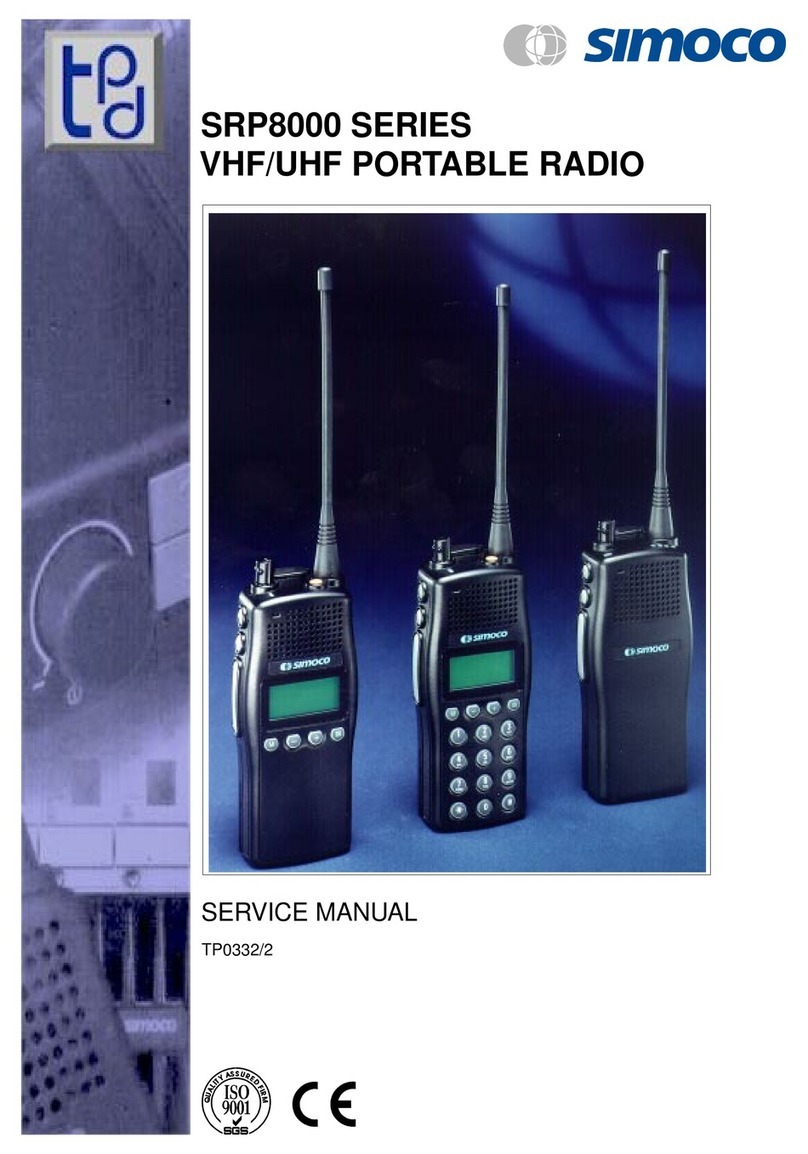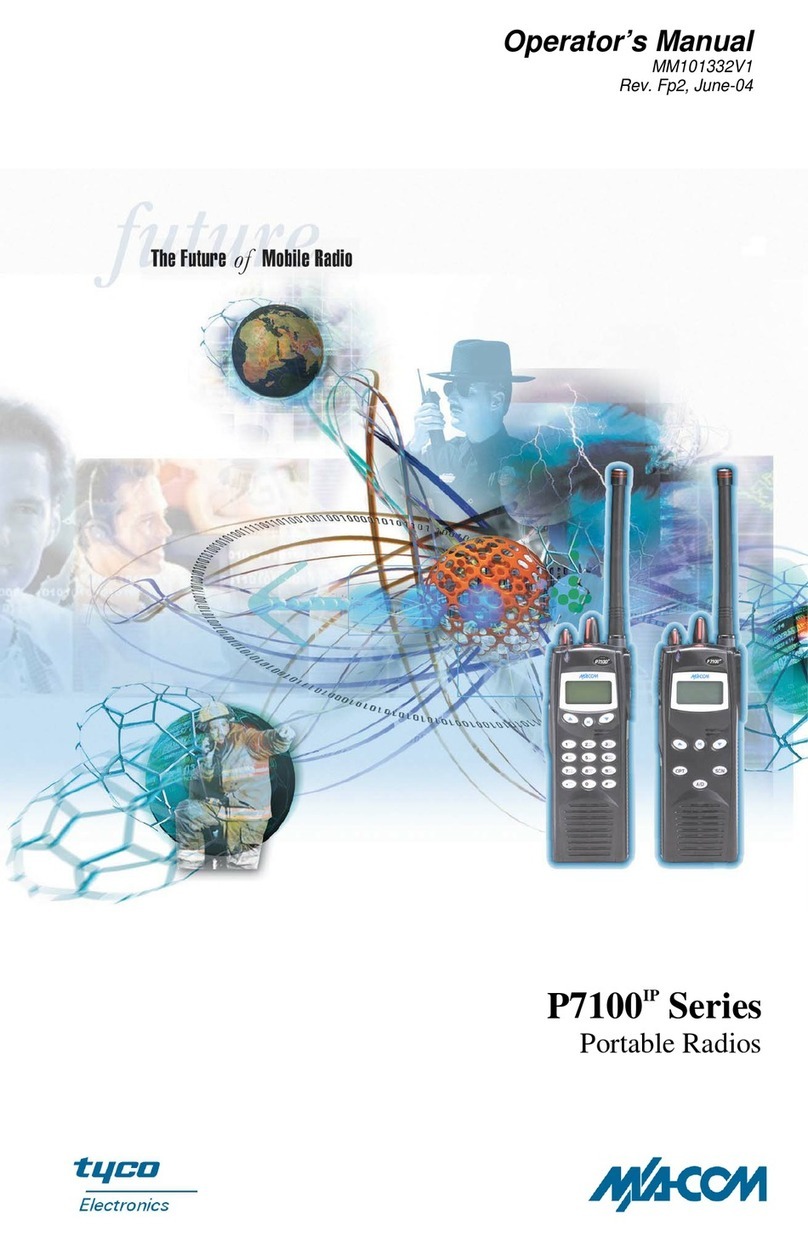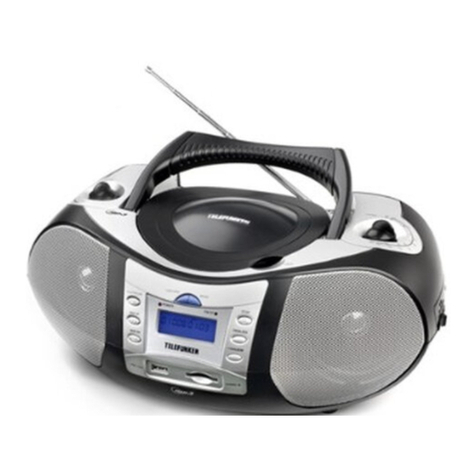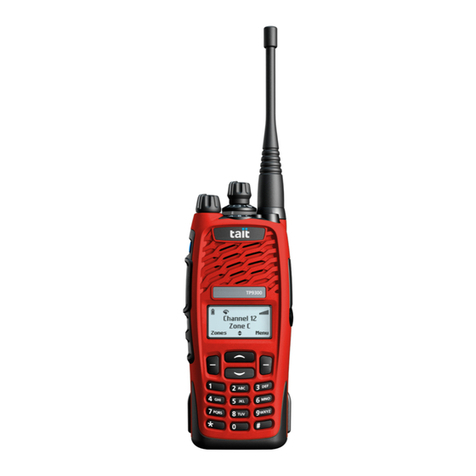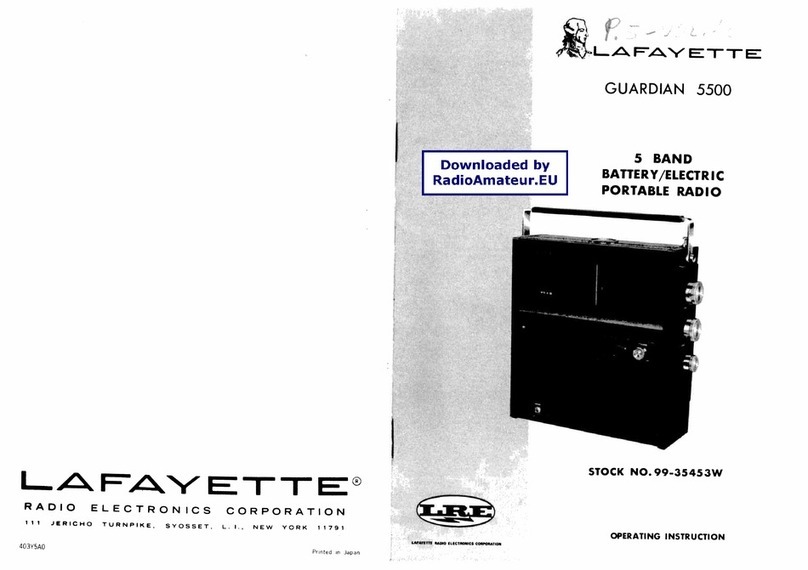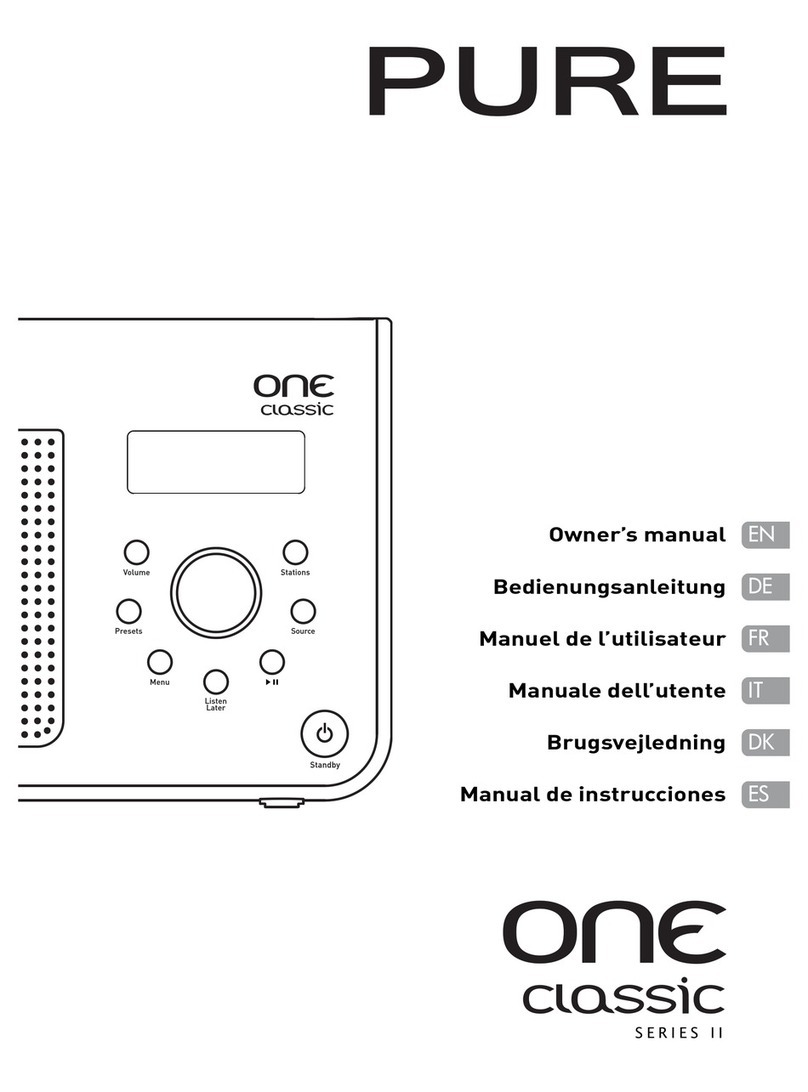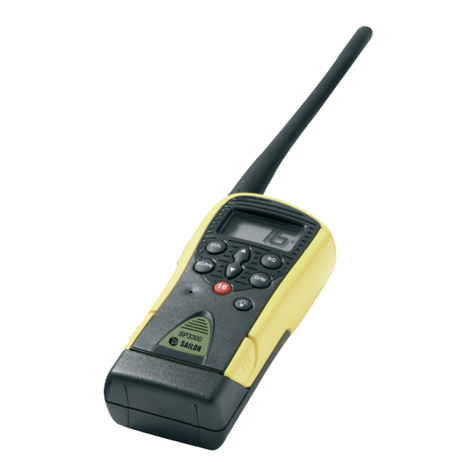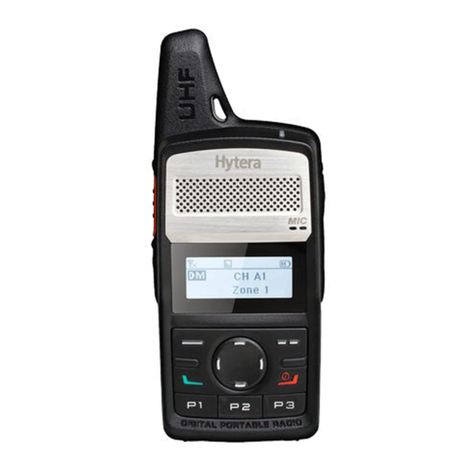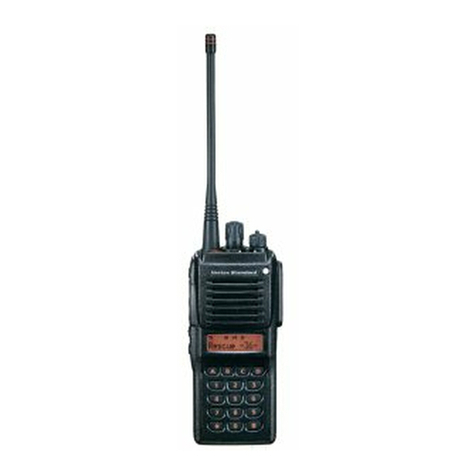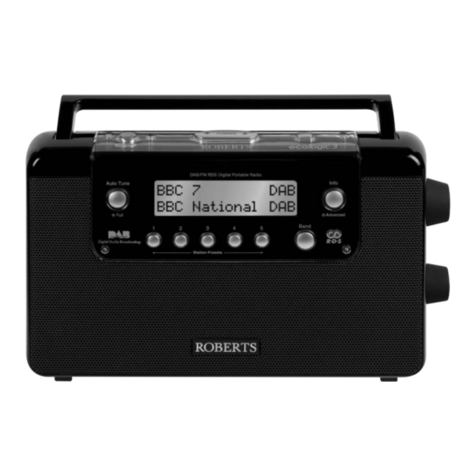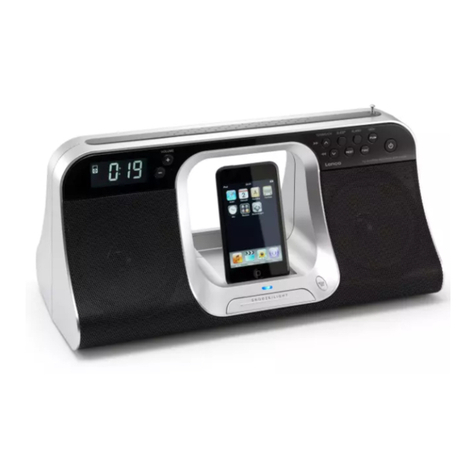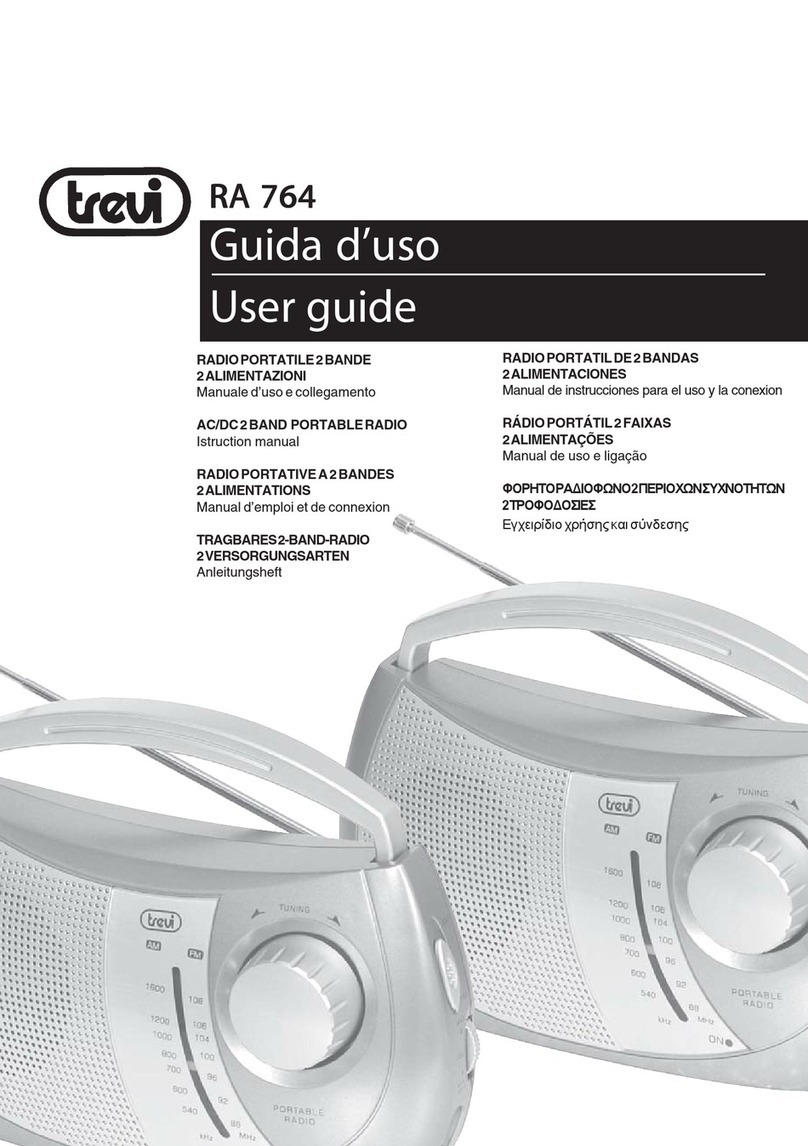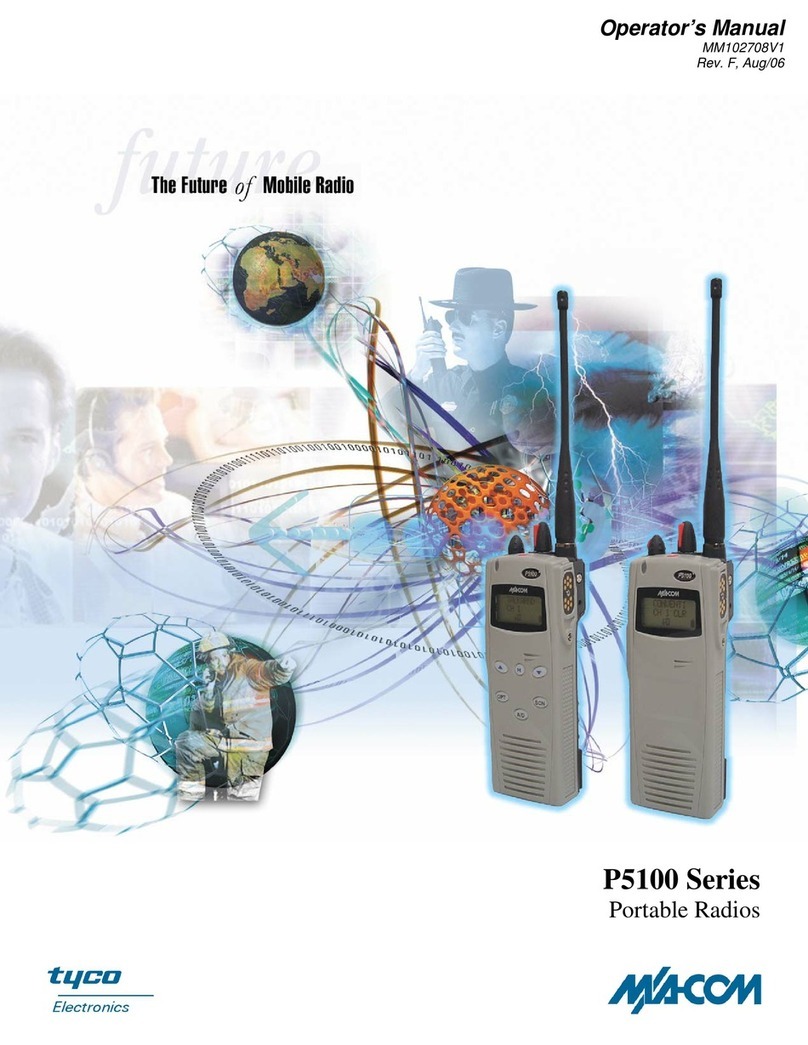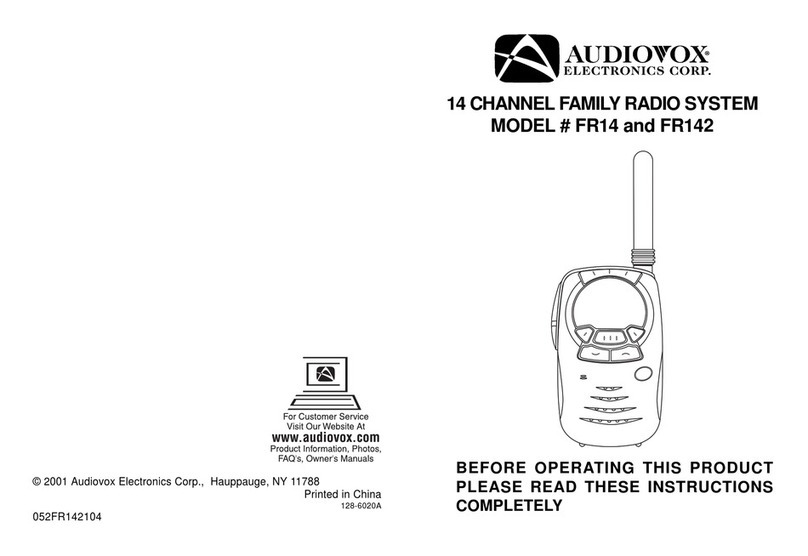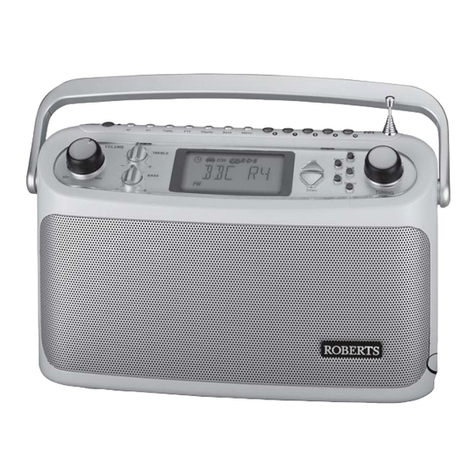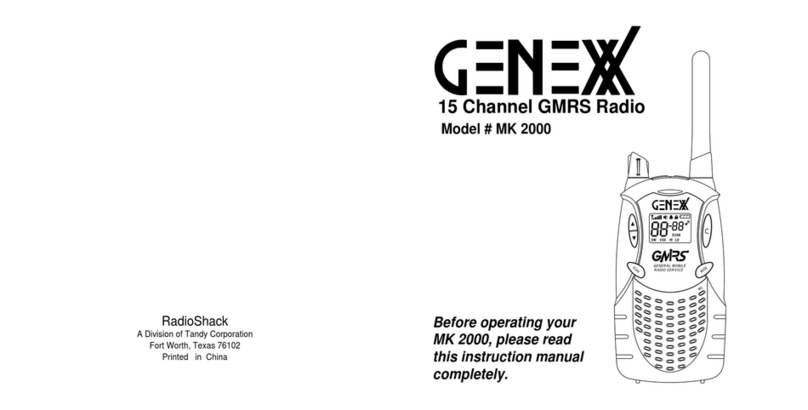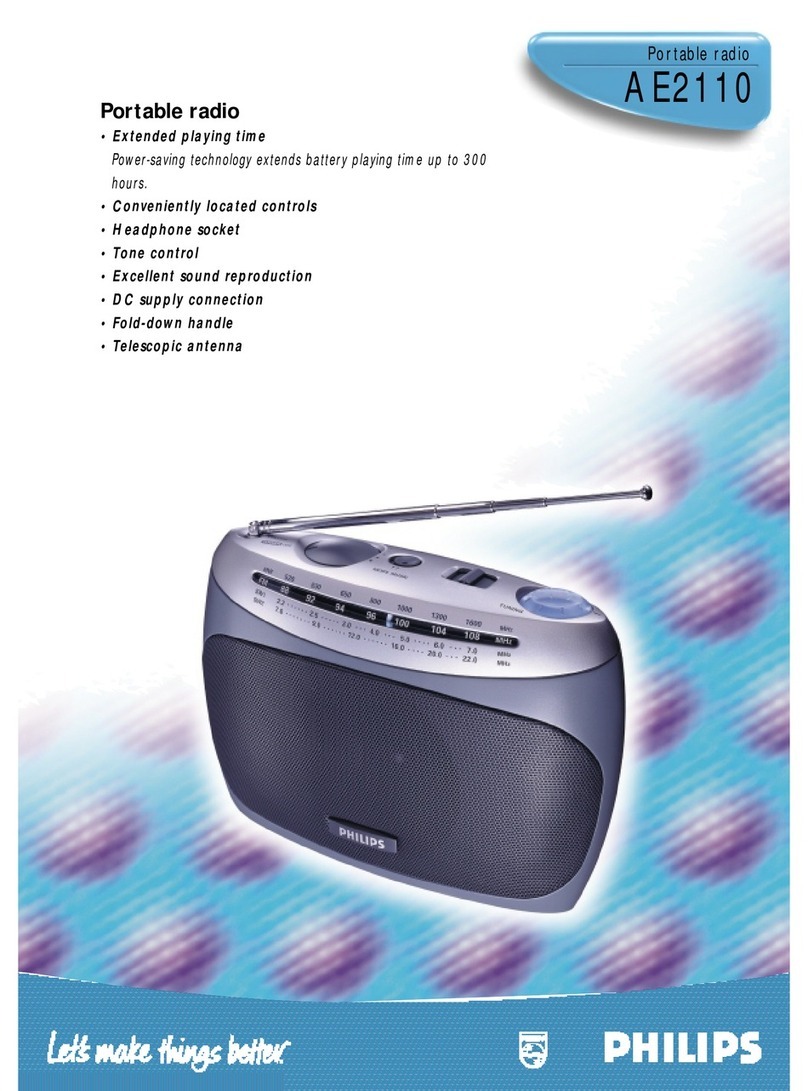
Menus (all menus may not be
programmed) Menus
Zone ▲ ▼ Scroll through list of zones.
F1 Select zone and return to main screen.
Channel ▲ ▼ Scroll through list of channels.
F1 Select channel and return to main screen.
Contacts ▲ ▼ Scroll through contact list.
PTT Press to call selected entry.
Call Log ▲ ▼ Scroll through r’cd stored calls.
PTT Press to call back.
Scan
▲ ▼ Select On/Off scan options.
F1 Press to Start/Stop scan.
F4 Return to previous menu level.
Settings
▲ ▼ Scroll through Settings sub-menus.
F1 Press to access selected sub-menu.
F4 Return to previous menu level.
Mute Level ▲ ▼ Change Mute level.
F1 Accept change and return to previous menu level.
RSSI F1 View RSSI level.
Radio Info
▲ ▼ Scroll through Radio info: Radio ID, Serial No., S/W Ver etc.
F1 Press to view selected Radio Info screen.
F4 Return to previous menu level.
Options
Enable/Disable/adjust: Key Beeps, Backlight, Brightness, Contrast, Alert Vol, Speaker Vol.
▲ ▼ Scroll through Options sub-menus.
F1 Press to access selected sub-menu/function.
▲ ▼ When function selected, use to adjust the level of the function.
F4 Return to previous menu level.
KEYS
Key Symbol Function
Volume Turning the knob clockwise to increase volume, anti-clockwise to decrease volume.
PTT Push-To-Talk. Hold the radio about 10 cm from mouth, press and hold the PTT switch. Release to
listen.
F1 key – Prog. Function Key. Default – Menu select.
Press this key to enter the menu system, then use (▼) or (▲) to select the desired menu
F4 key = Prog. Function Key. Default – Back.
F5 key Prog. Function Key. Default – Alarm.
F6 key Prog. Function Key.
F7 key ▲Prog. Function Key. Default – Up key for scrolling.
F8 key ▼Prog. Function Key. Default – Down key for scrolling.
F11 key Prog. Function Key.
F12 key Prog. Function Key. On/Off.
F13 key Prog. Function Key.
PROBLEMS AND HINTS CARE OF YOUR RADIO
The SDP650 Radio is a high quality reliable product.
In the unlikely event of a problem, please check the
following points before contacting your supplier:
If the Radio fails to work, check that the battery is
charged and correctly fitted and that the radio is
switched on. If the radio does not receive or send
calls, check that the antenna is correctly fitted and
the volume is turned up.
Consider that there maybe insufficient signal
strength at your position. Try moving to an area
where the signal strength maybe stronger.
If the Radio displays an error message at switch on,
please refer to your supplier.
To keep your Radio clean use a
slightly DAMP soft cloth for all
exterior surfaces - DO NOT use
chemical, aerosol or abrasive cleaners.
To ensure efficient operation, the
battery contacts should be
periodically cleaned with a soft damp
cloth.
Batteries must be disposed of in
accordance with your local Health &
Safety Regulations. Do NOT incinerate
or dispose of as normal waste.
IMPORTANT SAFETY WARNINGS
Use only approved SIMOCO battery, part number PAR-600BATL2 or PAR600BATL3.
SDP660 portable radio equipment is only to be connected to Simoco approved chargers and
accessories.
Battery connection, disconnection, and charging must only be carried out in non-hazardous
areas.
Metal belt clips must NOT be used in hazardous areas.
Approved accessories may only be connected and disconnected outside the hazardous area.
GENERAL WARNINGS:
Do NOT operate the radio if the antenna has become disconnected or damaged.
Obey the 'Turn Off Two-way Radios' signs where these are posted, e.g. on a petrol station
forecourt.
Do NOT operate your radio in an explosive atmosphere – unless the radio level of IECEx
approval is approved for use in that atmosphere.
Do NOT operate your portable radio without a hands-free kit whilst driving a vehicle.
Do NOT touch the antenna while the radio is transmitting.
Do NOT use or store the battery above +60 °C
Do NOT dispose of batteries in a fire.
Only recharge batteries in an approved battery charger.
RX/TX LED
Green LED when receiving a signal.
Flashing Green. Radio in talk-back hang time (Digital Channel only).
Flashing Yellow. Channel busy.
Red LED when the radio is transmitting.
Flashing Red – Emergency Mode active.
Flashing Orange – Low Battery.
Flashing Blue. Bluetooth enabled. (Rate of flash indicates whether paired/not paired and active).
